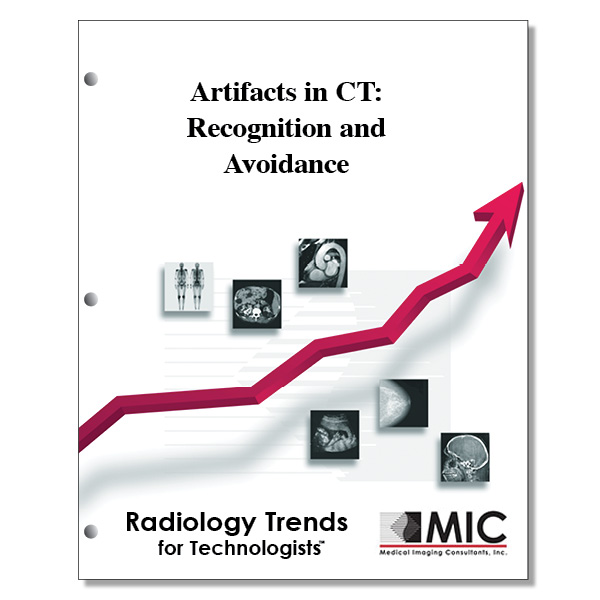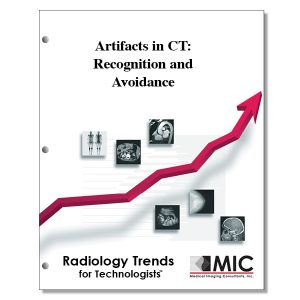

Artifacts in CT: Recognition and Avoidance
A presentation of why artifacts occur in CT images and steps that can be taken by the technologist to prevent or suppress them.
Course ID: Q00130 Category: Radiology Trends for Technologists Modalities: CT, Nuclear Medicine2.0 |
Satisfaction Guarantee |
$24.00
- Targeted CE
- Outline & Objectives
- Objectives
Targeted CE per ARRT’s Discipline, Category, and Subcategory classification:
Computed Tomography: 2.00
Image Production: 2.00
Image Evaluation and Archiving: 2.00
Nuclear Medicine Technology: 2.00
Image Production: 2.00
Instrumentation: 2.00
Outline
- Introduction
- Physics-Based Artifacts
- Patient-Based Artifacts
- Scanner-Based Artifacts
- Helical and Multisection CT Artifacts
- Summary
Objectives
Upon completion of this course, students will:
- be familiar with the appearance of CT artifacts
- know the categories that CT artifacts are typically grouped into
- understand what happens to the mean energy of the x-ray beam as it passes through an object
- know what happens to the beam when lower energy photons are absorbed more rapidly than higher energy ones
- know the forms of beam hardening artifacts
- understand the appearance of a CT image of a round water phantom exhibiting a cupping artifact
- know the methods used to minimize beam hardening artifacts
- understand how to “pre-harden” the beam by using some form of attenuation material
- know how the technologist can minimize beam hardening
- understand what can occur when a dense object juts out part of the way into the path of the x-ray beam
- know how partial volume artifacts can best be avoided
- understand what artifacts tube current modulation and adaptive filtration are used to minimize
- know what affect tube current modulation and adaptive filtration have on patient dose
- know how the number of projections acquired per tube rotation affects aliasing
- be familiar with which artifacts flying focal spot techniques can help minimize
- know what artifacts surgical implants made of metal may cause
- understand why metal artifacts occur
- know how to minimize metal artifacts
- understand how to reduce patient motion
- be familiar with the methods CT manufactures employ to minimize motion artifacts on CT images
- understand what can occur with the use of a partial scan mode
- know what artifact can occur when detectors fail
- understand which artifact is a sign of a bad detector on a scanner that utilizes a rotating tube and detector assembly
- know how to minimize helical scan artifacts
- understand the relationship between pitch and the number of vanes in the windmill artifact
- understand the relationship between the number of sections acquired per rotation and the shape of the beam
- know the image reconstruction method used on multisection scanners
- know what artifacts appear around the edges of structures in 3D reformatted images
- understand what artifacts may appear on multiplanar images derived from helical data
- know the most important factors in minimizing patient motion
